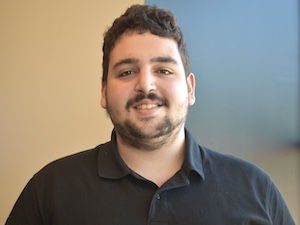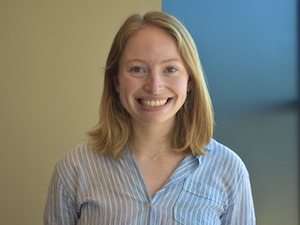2022 Week 2: Government/Policy
 Kerim Bali | Office of Councilmember James Torrence
Kerim Bali | Office of Councilmember James Torrence
 Mikayla Chua | Office of Councilmember James Torrence
Mikayla Chua | Office of Councilmember James Torrence
This week, the office was inundated with constituent emails about paint chips falling around the neighborhood, including homes and playgrounds, from the TV Tower. What’s more is that these paint chips tested positive for lead by the BCHD. Other residents knew beforehand when testing the paint chips out themselves. As such, there were a number of constituents that were highly concerned about their private property and public space being littered or contaminated. This situation was reminiscent of Baltimore City’s longstanding toxic legacy with lead poisoning due to negligence and the aging of the housing stock, which has left lead paint in homes to this day and saw a high number of lead poisoning cases among children. The concern is deeply embedded into Baltimore’s history and the sense of urgency and concern could be felt by the residents in the district.
As much as it was initially overwhelming to receive the sheer volume of emails about the same complaints, it does speak to the asset of the collectivization and the force of the residents’ voices. Together, the residents informed the office with pictures of the paint chips on their houses and in the playgrounds. The issue, I feel, also empowered many residents to ensure with members in the office that the situation was taken care of through the correct channels of the 311 system, which better informed them of the process of how local government works and participates in the effort in tandem with the government.
A lot of the members also offered to expedite fixing the problem by volunteering to vacuum the chips. I felt the power and collectivization of the neighborhood to be astounding and can get a sense of how pressure from the outside feels from the inside. The Office quickly alerted the proper departments and agencies to address the issue and streamline significant information to the community. It was very enlightening to see how the government responds to an urgent issue at hand.
 Sigrid Edson | Mayor’s Office of Immigrant Affairs
Sigrid Edson | Mayor’s Office of Immigrant Affairs
Because I’m working completely remotely, one challenge for me has been keeping momentum throughout the workday and making sure I accomplish tangible tasks each day. Amid my first-week nervousness at how I would stay on track while working from home (and based on wisdom gained from last summer’s hybrid work), I set a few baseline, bare-minimum goals for myself: I would read emails as soon as I got them and reply within a workday, I would attend and take time to prepare for every meeting I could, I would meet deadlines, and I would set a main focus for each week and tasks for each day. So far, I have consistently met all of these goals except for setting daily tasks. Reflecting on my own, I think one reason why this has been difficult is that if I feel I have more than enough time to meet a deadline, I don’t always plan urgently. This coming week, I’m going to try setting aside specific amounts of time during the day to complete tasks — for example, tomorrow I’m going to aim to send a draft of proposed changes to MIMA’s volunteer program to my supervisor by 3:00, then work on a data gathering project for at least one hour, then send my supervisor a meeting agenda for Tuesday morning before 5:00. The goal is to feel like I’m taking steps forward each day.
All this said, despite the challenges, I do feel like I am slowly deepening my understanding of my organization and their work by sitting in on meetings, reading up on background information, and beginning my primary projects in earnest. I’m excited about the work, and I think locking into a routine will be the key to getting the most out of it and giving the most to it.
 Carlos Gamboa | Office of Councilmember Zeke Cohen
Carlos Gamboa | Office of Councilmember Zeke Cohen
As I walked into my room with my third cup of coffee that day, I was greeted by the sound of a new Outlook message. I sat down, refreshed my email, and watched helplessly as my inbox was flooded with replies from city agencies, as well as a handful of fresh requests from residents. I sighed and rested my head in my hands. This was going to be a long day.
The bulk of my work with councilman Zeke Cohen’s office consists of constituent services, including helping residents file 311 requests, expediting delayed inquiries with the relevant agencies, and keeping constituents updated about the status of their requests. I typically only handle cases about city parks and parking, all of which originate in District One. Even so, the workload can be considerable, especially considering that certain cases, like stump removal and sidewalk repair, can stretch on for as long as a year. This frequently proves frustrating, both for staff and constituents. I am left with a sprawling spreadsheet of unresolved inquiries; meanwhile, frustrated residents wait for months on end for the city to remove a dead tree.
Although some cases are open and shut in a few days, delays prompt the occasional message from an annoyed constituent, which range from polite to downright virulent. Prior to my internship, I cynically assumed that these delays were the result of bureaucratic incompetence, but the truth is more nuanced. In reality, long wait times are reflective of a city facing myriad challenges. Like the rest of the world, Baltimore’s government has suffered labor and supply shortages due to the COVID-19 pandemic, leaving many agencies without the manpower or equipment to provide essential services. Additionally, certain agencies, such as the Department of Transportation, have recently withered sharp budget cuts. Though the city’s response time has slowed, the tide of constituent requests has not: if anything, pauses in service during the pandemic have increased the volume of messages.
This has left Baltimore City employees in a difficult spot, buried in service requests and without adequate resources to address them.
Despite this maddening situation, however, the mood in City Hall is generally cheery: in fact, I have never worked in a more upbeat environment in my life. Councilmembers and staff alike are more than happy to chat about anything from recent ordinances to local restaurants. Furthermore, they are relentlessly optimistic, highlighting the city’s attributes and tackling its problems with unwavering dedication. The office faces its fair share of obstacles, but it is fueled by the most powerful driving force of all: love for Baltimore City and its people. So, even on the most hectic days, I am always ready to help the team in any way I can. Although the work can be tiring, there could be no better cause.
 Diksha Iyer | Out for Justice
Diksha Iyer | Out for Justice
I definitely have faced some challenges with commuting and being in-person five days a week for the past two weeks. Having had the past two (nearly three) years be either in an online or hybrid format (with a shorter commute than I face now), I felt very unprepared the first couple of weeks to be able to get to work on time and have the energy to make it through the day. My ability to have back-to-back interactions with people throughout the day definitely had decreased since online school granted me the opportunity to sequester myself into a place where I could be alone and recharge while I work. Being in-person requires me to be ready to address emergency situations that could arise while I am there, which placed a layer of stress at first, but has quickly become something that I have acclimated to. It is definitely something I have to get used to again, but I am excited to try.
I am very passionate about the work that my placement is doing and am very honored to see how such a small group of people operate to tackle such a systemic issue. However, to physically do that work has required some adjusting. I am not used to taking a commute by bus that could take up to 45 minutes (it’s a mental challenge for a person that is used to commuting via car) and I am definitely not used to working in-person. I felt myself slipping during the second week, when the tiredness began to hit, and it was more difficult to get through each day. However, I am really grateful that this internship has allowed me to challenge myself in these ways and will help prepare me for living on my own. I am already beginning to see where I depended too much on my parents or the university to provide for me.
Another adjustment I have had to address is the flexible nature of my placement; I am given several small tasks every day, but also larger projects that I can pace myself on and complete in my own time. However, I also am encouraged to identify areas of improvement and create my own projects that can help the operations of the organization. I am very terrified about this prospect (in a good way), because I do truly want to form my own goals in alignment with the goals of the organization and give my individually crafted contributions, but I want to be cognizant of what they need and how I can use my tools to address it. I do not wish to infringe on the organization’s existing culture with my contribution, so the open-ended nature of my self-created projects is scary. There is some fear in the unknown, but it’s a new challenge that I anticipate will be a running theme throughout the summer.
 Frank Meng | BCPS Engagement Department
Frank Meng | BCPS Engagement Department
After meeting with different departments head last week, I now understand the roles and responsibilities each department plays within the City Schools complex. The City Schools are, indeed, complex. I am not only talking about the intricate, interconnected, and interdependent functional departments but also the overlapping yet distinct goals of the City Schools. What I said might sounds confusing (which is fine as educational issues are complicated and cannot reduce to simple matters), but here is an example to illustrate it. On the first day of work, I was in a daylong meeting discussing building a systematic referral system (see last week’s reflection for details) to support students’ basic non-academic needs. Thursday, I talked to Travon, who is in charge of the parent-teacher association, and he told me that a lot of his work focuses on students’ needs and building a bridge between school and family, which is critical and fundamental to students’ growth and mental health. I asked him if he knew about last week’s meeting and his plan to align his responsibilities with the Community School coordinators. He does not know.
The more significant issue here is the lack of collaboration. There are some but not too much nor frequent interdepartmental communications. Each department is doing its job with a closed door. I am not blaming him because he is super responsible and is doing his best to support students’ families. My claims are also by no means an accusation or insinuation but simply an observation.
I bring my observation to my supervisor, who totally agrees. She, however, said there is not much we can do about it because there is no channel to communicate and update different teams’ goals with the entire city schools. Organizational inertia also occurs here as this is not a simple task one person or even a single group can achieve. With frustration, I will keep working on getting a clear picture of the goals and agenda of the city schools and potentially propose a plan to build an initial system for collaboration. I believe that by creating arenas for collaboration and deliberation, changes can be made.
